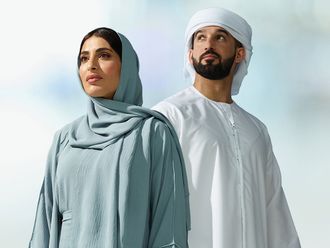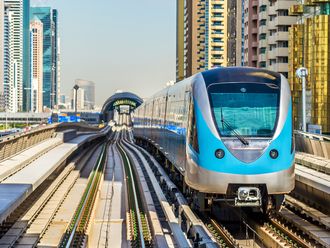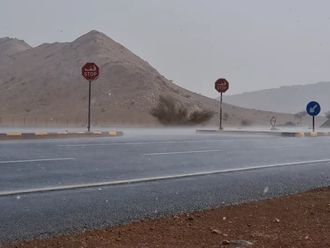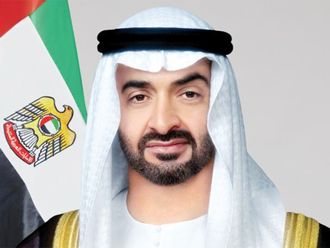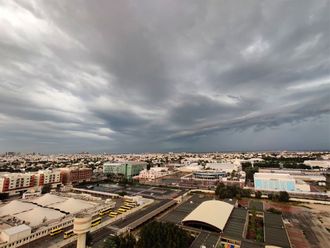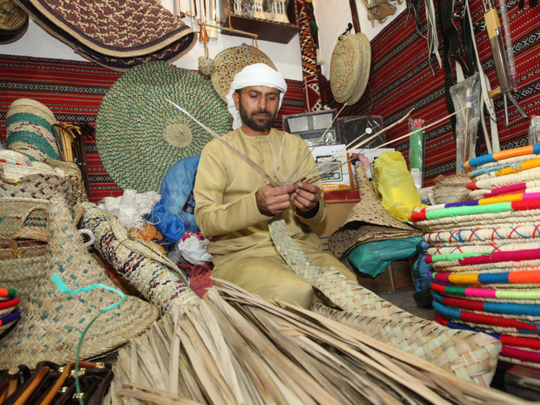
Dubai: Tourists in town for the Dubai Shopping Festival (DSF) can explore Emirati culture at the UAE pavilion and Hamdan Bin Mohammad Heritage Centre (HBMHC) at Global Village.
Many first-time visitors spend a whole month in the emirate during DSF but often miss out on experiencing the culture and traditional lifestyle of Emiratis. That heritage is still alive — be it in remote villages or within the walls of villas in the cities.
At the HBMHC’s area in Global Village, an entire scene from Bedouin and village life has been recreated. The simplicity and ingenuity of their form and function has left many visitors intrigued.
There is the Saffa house, built from stone with hollow sections. The architecture is designed to allow natural air circulation and there are deliberate gaps in the stone walls to maximise this process at strategic points.
Such houses were usually built near mountainous areas as it was easy to use the stones from the mountains for the construction. Since stones don’t absorb heat like other materials, these homes were ideal for the summer, which is very harsh in the UAE.
The desert climate has shaped almost all aspects of traditional life in the emirates. Even the winds have played a role.
A neighbourhood council of sorts, the Al Hathira, is like a semi circle covered from branches of the indegenious Markh tree, with the entrance facing north-west because winds generally blow towards the southeast here.
Other wonders of nature that are integral to desert life are the camel and the date palm tree. Camel milk, once staple everyday refreshment, is making a comeback in the UAE, even with non-Emiratis.
At HBMHC, there is a central area with some camels that are sometimes milked on the spot, providing a rare insight into the traditional way of life.
“Many tourists don’t even know the camel has milk and that milk can be drunk,” said Mohammad Sawad, a young Indian who brings tourists to Global Village. “It’s a bit salty but good.”
Camel meat is also still on the menu at traditional restaurants, at some Emirati weddings and even some modern cafes sell camel burgers.
Dates are another local food, but the relationship between the palm tree and the people here is even closer. Date palm leaves, fibre and bark is used to make everything from bread baskets, food covers and mats, ropes, roofs, fences and bags. It is also used to make stand a or pyramid-shaped stool on which the clothes are placed, making a tent-like shape so the traditional incense burner can be placed in the middle to perfume the clothes.
Even brooms and brushes are made from the material. Nothing was allowed to go to waste in the yesteryears and everything was utilised to its full potential.
At the Emirates Gallery stall at the UAE pavilion, visitors can see Emiratis weave and work with their hands in making traditional wares. There is also a mini-museum of sorts directly behind the stall that showcases the heritage items — animal-skin water bags, fishing nets, old rifles, and coffee jugs, among many others.
Visitors can even ask for some of the items to be made for them so they can take them away as souvenirs, although it can take hours or days for some of the replicas to be made.
“Things like this [HBMHC] exhibition should be placed right inside the malls. Everyone will be interested. So people will realise [Emirati culture] is real, it’s here. This is how they actually lived. I haven’t seen anything like this,” said Nimita, an Indian expat.



